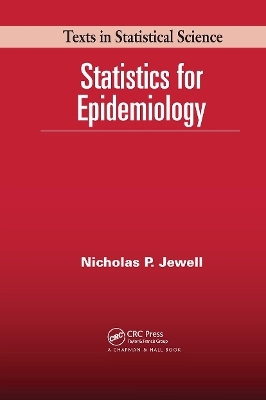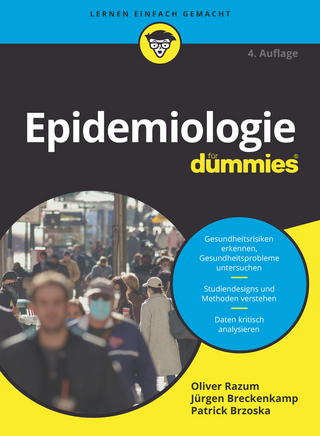
Statistics for Epidemiology
Seiten
2003
Chapman & Hall/CRC (Verlag)
978-1-58488-433-0 (ISBN)
Chapman & Hall/CRC (Verlag)
978-1-58488-433-0 (ISBN)
Statistical ideas have been integral to the development of epidemiology and continue to provide the tools needed to interpret epidemiological studies. This title develops the techniques for analyzing simple risk factors and disease data. It covers the logistic regression model and contrasts it with the Cox model for time-to-incidence data.
Statistical ideas have been integral to the development of epidemiology and continue to provide the tools needed to interpret epidemiological studies. Although epidemiologists do not need a highly mathematical background in statistical theory to conduct and interpret such studies, they do need more than an encyclopedia of "recipes."
Statistics for Epidemiology achieves just the right balance between the two approaches, building an intuitive understanding of the methods most important to practitioners and the skills to use them effectively. It develops the techniques for analyzing simple risk factors and disease data, with step-by-step extensions that include the use of binary regression. It covers the logistic regression model in detail and contrasts it with the Cox model for time-to-incidence data. The author uses a few simple case studies to guide readers from elementary analyses to more complex regression modeling. Following these examples through several chapters makes it easy to compare the interpretations that emerge from varying approaches.
Written by one of the top biostatisticians in the field, Statistics for Epidemiology stands apart in its focus on interpretation and in the depth of understanding it provides. It lays the groundwork that all public health professionals, epidemiologists, and biostatisticians need to successfully design, conduct, and analyze epidemiological studies.
Statistical ideas have been integral to the development of epidemiology and continue to provide the tools needed to interpret epidemiological studies. Although epidemiologists do not need a highly mathematical background in statistical theory to conduct and interpret such studies, they do need more than an encyclopedia of "recipes."
Statistics for Epidemiology achieves just the right balance between the two approaches, building an intuitive understanding of the methods most important to practitioners and the skills to use them effectively. It develops the techniques for analyzing simple risk factors and disease data, with step-by-step extensions that include the use of binary regression. It covers the logistic regression model in detail and contrasts it with the Cox model for time-to-incidence data. The author uses a few simple case studies to guide readers from elementary analyses to more complex regression modeling. Following these examples through several chapters makes it easy to compare the interpretations that emerge from varying approaches.
Written by one of the top biostatisticians in the field, Statistics for Epidemiology stands apart in its focus on interpretation and in the depth of understanding it provides. It lays the groundwork that all public health professionals, epidemiologists, and biostatisticians need to successfully design, conduct, and analyze epidemiological studies.
Nicholas P. Jewell
Introduction. Measures of Disease Occurrence. The Role of Probability on Observational Studies. Measures of Disease-Exposure Association. Study Designs. Assessing Significance in a 2 x 2 Table. Estimation and Inference for Measures of Association. Causal Inference and Extraneous Factors: Confounding and Interaction. Control of Extraneous Factors. Interaction. Exposures at Several Discrete Levels. Regression Models Relating Exposure to Disease. Estimation of Logistic Regression Model Parameters. Confounding and Interaction Within Logistic Regression Mode. Epilogue - the Examples.
| Erscheint lt. Verlag | 26.8.2003 |
|---|---|
| Reihe/Serie | Chapman & Hall/CRC Texts in Statistical Science |
| Zusatzinfo | 116 Tables, black and white; 47 Illustrations, black and white |
| Sprache | englisch |
| Maße | 156 x 234 mm |
| Gewicht | 1350 g |
| Themenwelt | Studium ► Querschnittsbereiche ► Epidemiologie / Med. Biometrie |
| Naturwissenschaften ► Biologie | |
| ISBN-10 | 1-58488-433-9 / 1584884339 |
| ISBN-13 | 978-1-58488-433-0 / 9781584884330 |
| Zustand | Neuware |
| Informationen gemäß Produktsicherheitsverordnung (GPSR) | |
| Haben Sie eine Frage zum Produkt? |
Mehr entdecken
aus dem Bereich
aus dem Bereich
ein überfälliges Gespräch zu einer Pandemie, die nicht die letzte …
Buch | Hardcover (2024)
Ullstein Buchverlage
24,99 €


